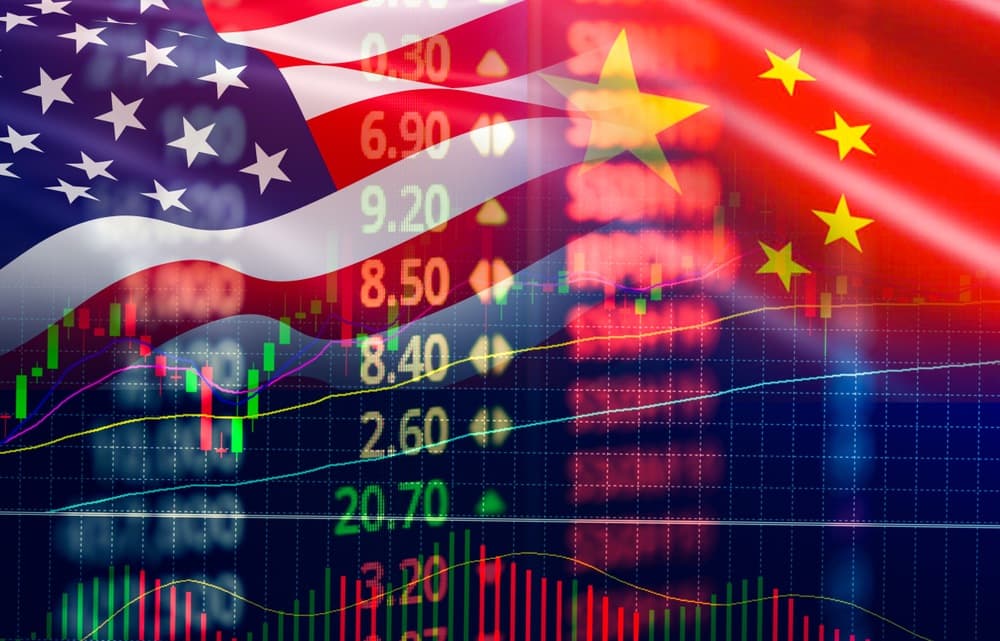
With the Fourth of July upon us, it’s worth asking: What seismic events are bubbling beneath the market spectacle — and if you’re building a legacy, how resilient is your wealth in a world where dazzling performances may be concealing a structural meltdown?
If you’ve navigated stagflation, dot‑com mania, the subprime wreck, and the Fed’s digital experiments, you know that 2025 feels like deja vu — but far more dangerous.
Markets are humming, policy dazzles, but beneath the gloss — tech booms, liquidity surges, digital currencies — the very foundations of money, governance, and investor sentiment are cracking, realigning, even smoldering.
The post-World War II Pax Americana isn’t evolving; it’s being dismantled rather quickly.
What’s emerging is accompanied by a load of distraction and showmanship. So it’s important to focus on the actual events taking place right now that are going to affect your portfolio this year.
And, we can’t overstate this, the changes that are actually happening right now to your money.
Today, digital dollars masquerade as cash, tariffs are cloaked as protection, AI layoffs spun as productivity, private assets packaged as democratized. And yet, none of it matters if the final pillar — confidence — crumbles.
When belief falters, no trumpet of “seismic event” grants you shelter.
Each of these five seismic events is a once-in-a-generation crack in the facade — and with the right insight and action, each offers a rare opportunity to re-anchor your assets. Here’s how to spot and seize them:
This THIRD WAVE from Texas
Will Redefine America for Decades
Coal fueled the first industrial revolution. Oil fueled the second. Now a silvery-white, energy-packed metal from Texas is about to fuel a THIRD, new era of American might. Three stocks are poised to lead the way. See the details here.
1.  The Once and Future Money is Back, Baby!
The Once and Future Money is Back, Baby!
On July 1, Basel III reclassified gold as Tier 1 capital, eliminating penalties and equating it with cash. This is real. And more than just a wet dream for gold bugs.
Central banks reacted immediately: Poland and Kazakhstan each added 20 tonnes in May, and 95% of central banks plan to add more.
The World Gold Council commented, “Central bankers are sending a clear message — gold matters again.” For the prudent investor, this is no mere hedge — it’s a strategic tool to preserve wealth when currencies wobble.
“The big banks are getting ready for Tier 1 classification on gold,” legendary gold investor Frank Giustra says, “bringing their gold into the US so they can use it as part of their collateral system.”
He also warned of “a mad rush for physical gold… even the U.S. is bringing it back in,” saying it indicates preparation for “a new global monetary system”In Frank’s view, the reinstatement of physical bullion as Tier 1 capital isn’t a minor tweak—it’s a “reset,” ushering in “incredible ramifications” for the financial system
Consider increasing your allocation to physical bullion or gold ETFs before prices fully reflect this newfound importance.
2.  Stablecoins Gain Legal Ground — Digital Yields You Can Trust
Stablecoins Gain Legal Ground — Digital Yields You Can Trust
The GENIUS Act passed on June 17, granting dollar-backed stablecoins federal legitimacy: 1:1 reserves, audits, AML/KYC compliance.
Citigroup estimates $1.2 trillion in new Treasury demand; Bernstein projects stablecoin assets could exceed $1.6 trillion by 2030.
That means code-based liquidity is now legal, liquid, and yield-powered. If you can navigate this new digital terrain, allocating a portion of your cash to stablecoin platforms could yield returns beyond conventional money markets — just be sure to use regulated providers.
Treasury Secretary Scott Bessent is all in. “A thriving stablecoin ecosystem will drive demand from the private sector for US Treasuries, which back stablecoins.”
Meanwhile, a recent Wall Street Journal analysis noted that the GENIUS Act – by requiring stablecoin issuers to hold short‑term Treasuries — could significantly boost demand for Treasury bills, “potentially lowering government borrowing costs and helping rein in the national debt.” Bessent echoed this message.
3.  Tariffs Locked In — Revealing Domestic Investment Frontiers
Tariffs Locked In — Revealing Domestic Investment Frontiers
April 2’s 10% tariffs — and 50% on strategic goods — erased $3 trillion from asset values in just two days.
May’s Geneva meeting confirmed tariffs as doctrine.
Inflation is getting priced in, and supply chains slowly shift back home.
For alert investors, this offers a unique window: U.S.-centric industrials, energy suppliers, and reshoring plays are now positioned to benefit — ideally before this new trade regime matures.
4.  Retail Frenzy Hits Peak as Insiders Exit — Time to Follow the Smart Money
Retail Frenzy Hits Peak as Insiders Exit — Time to Follow the Smart Money
Since April, the S&P has hit twelve record highs; retail inflows echo 2021. Yet insiders — armed with foresight — are unloading billions in shares. Nvidia’s execs sold $1 billion in June; CFOs across the S&P are similarly cashing out.
Public boldness paired with private retreat is a classic signal. Observant investors can prepare defensive positions or take advantage of the unwinding early — this divergence may foreshadow broader rotations or corrections.
5.  Private Markets Go Public — Yield with Transparency at a Premium
Private Markets Go Public — Yield with Transparency at a Premium
Private credit has climbed to $1.8 trillion and looks set for $3 trillion by 2028; private equity vehicles are entering mainstream portfolios. But these assets are illiquid, opaque, and infrequently priced.
Sixth Street’s Alan Waxman warns: “Treating private credit like a commodity kills what made it work.” With tokenized SpaceX shares, SPAC resurgences, and Circle’s IPO in play, the appeal is strong — but so is the need for caution.
Selective exposure — through closed-end funds or small, well-understood allocations — can capture this yield without succumbing to obscurity.
 Ready, Set… Second Half!
Ready, Set… Second Half!
As we noted yesterday, every second that passes now we’re one second closer to 2050 and another farther away from the year 2000. It’s a good metaphor to tag onto these seismic shifts in your money, the economy and the global political order.
The shifts aren’t minor tremors — they’re structural and will redefine investing. For you.
Gold is reclaimed. The dollar enters the digital realm. Trade policy morphs into fiscal architecture. Retail excitement confronts insider strategy. Private markets pull back the curtain to reveal thin liquidity.
Each represents a one-in-a-lifetime chance to reposition your holdings — if you recognize the Great Reset unfolding and act decisively.
But don’t forget the bedrock: confidence. Recessions, liquidity freezes, or political upheavals — like Zohran Mamdani’s rise in NYC — can destroy illusions overnight. Spectacle dazzles, but substance survives.
As fireworks light the sky tomorrow, let’s be sure you’re aware of these real-world shifts and your money is securely anchored… and that you’re not dazzled by the night’s entertainment flashing on the wall of some metaphorical cave.
~ Addison
P.S.: We’ll be off tomorrow for Independence Day. Enjoy the long weekend!
Your thoughts? Please send them here: addison@greyswanfraternity.com




